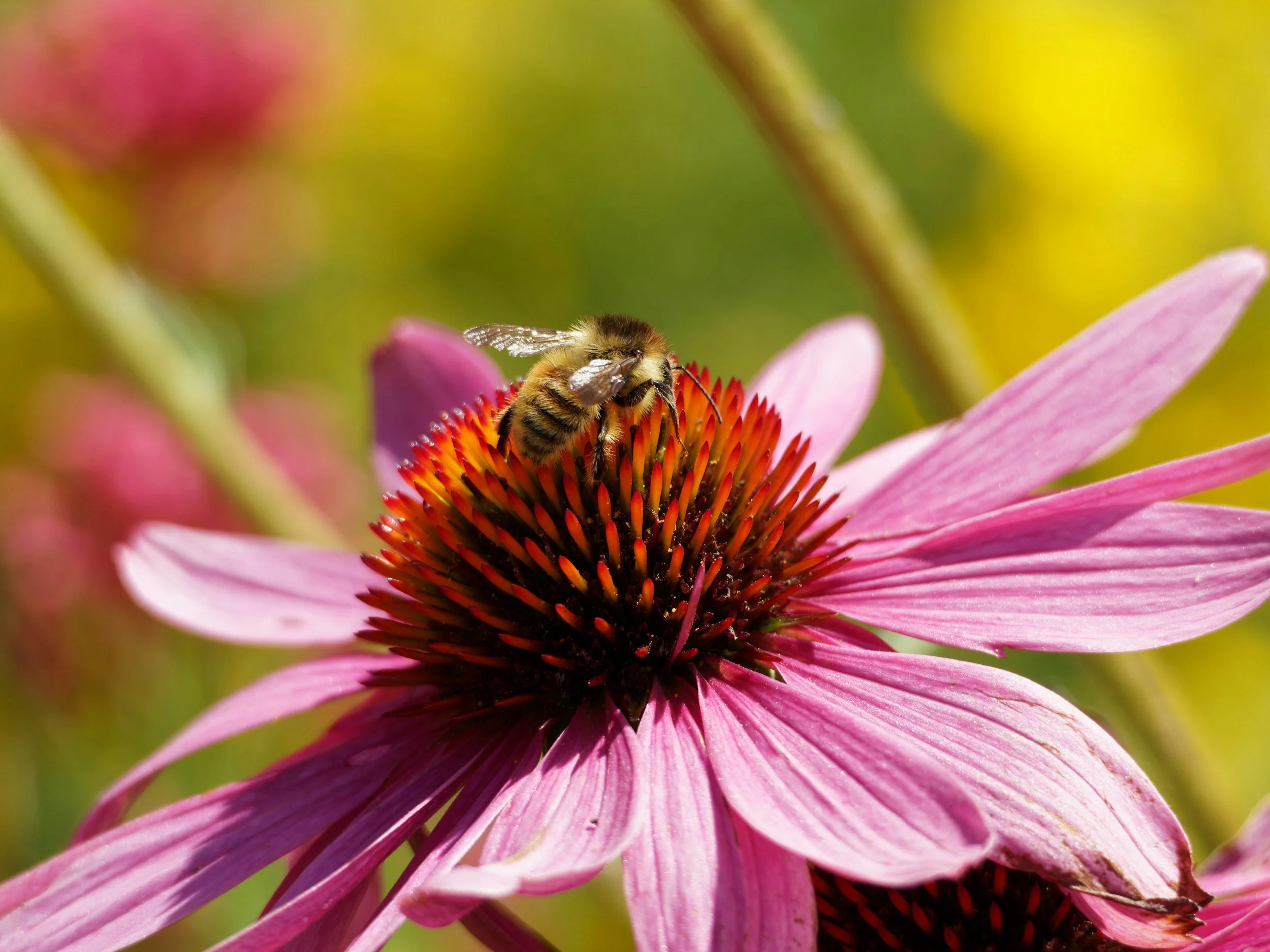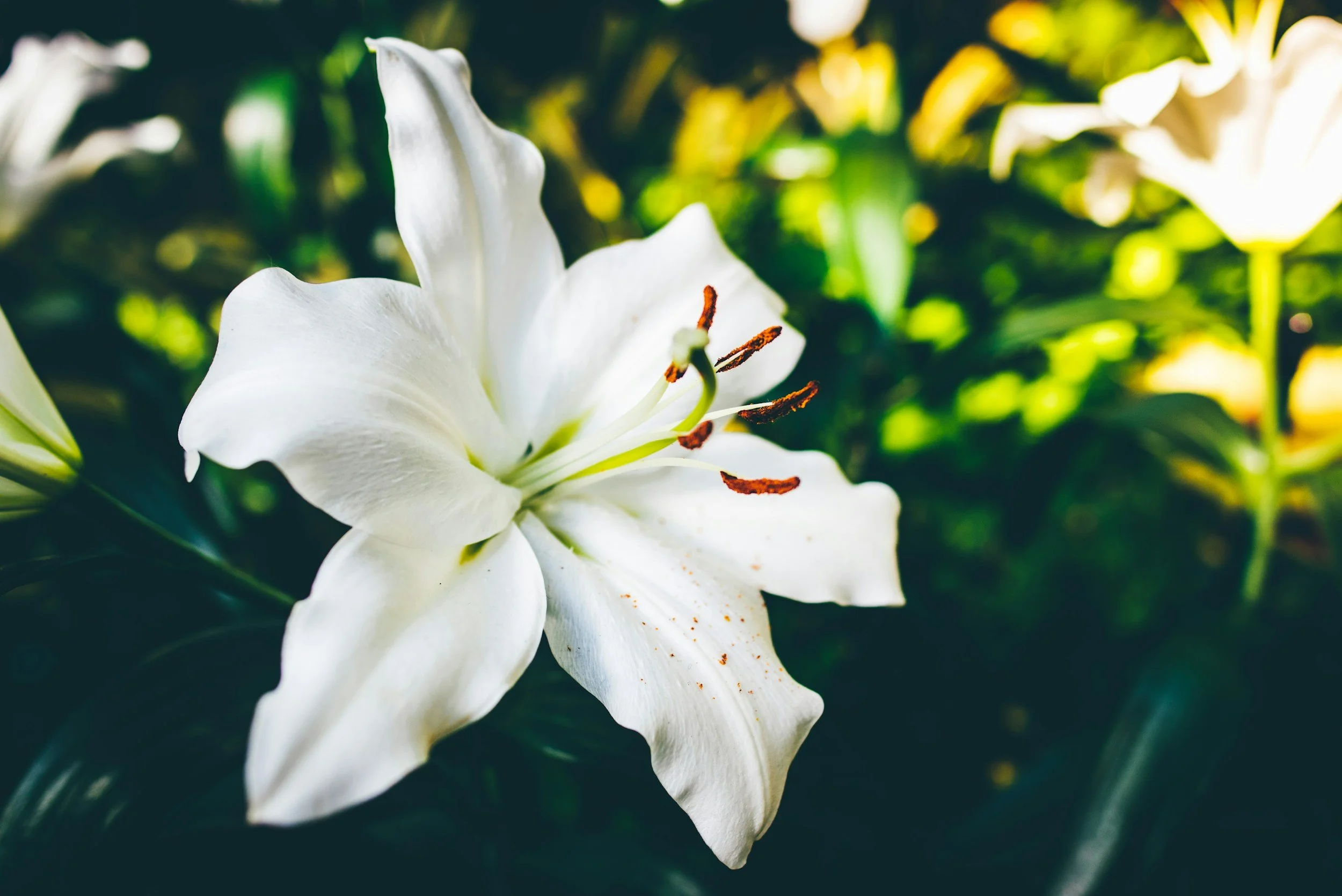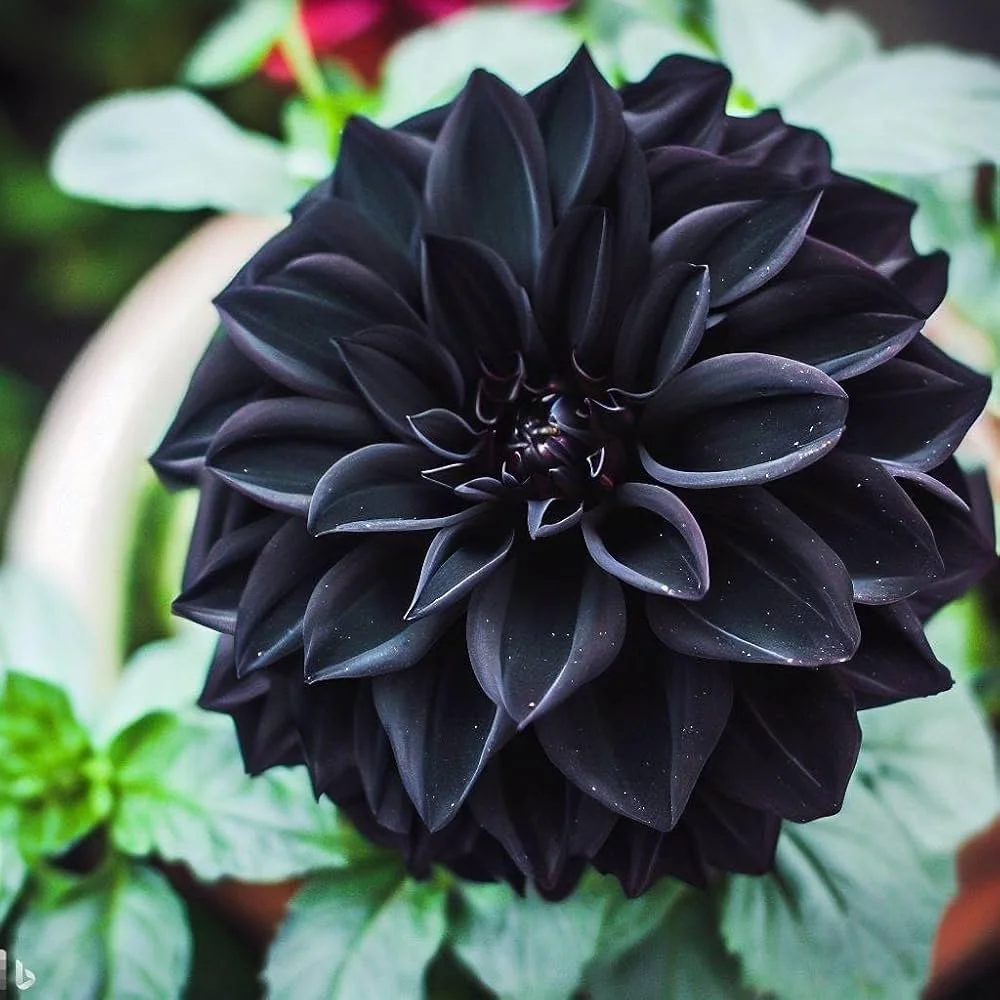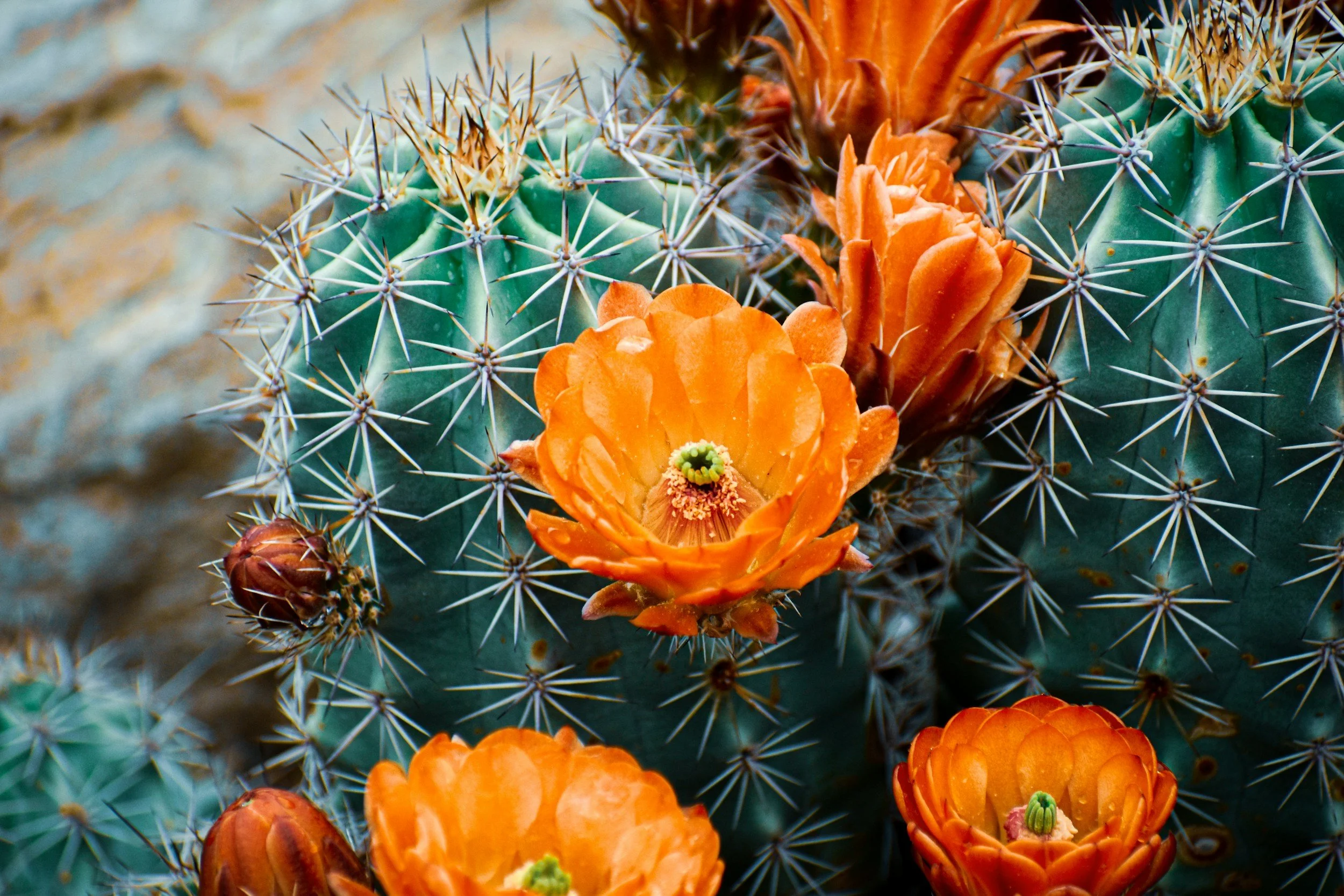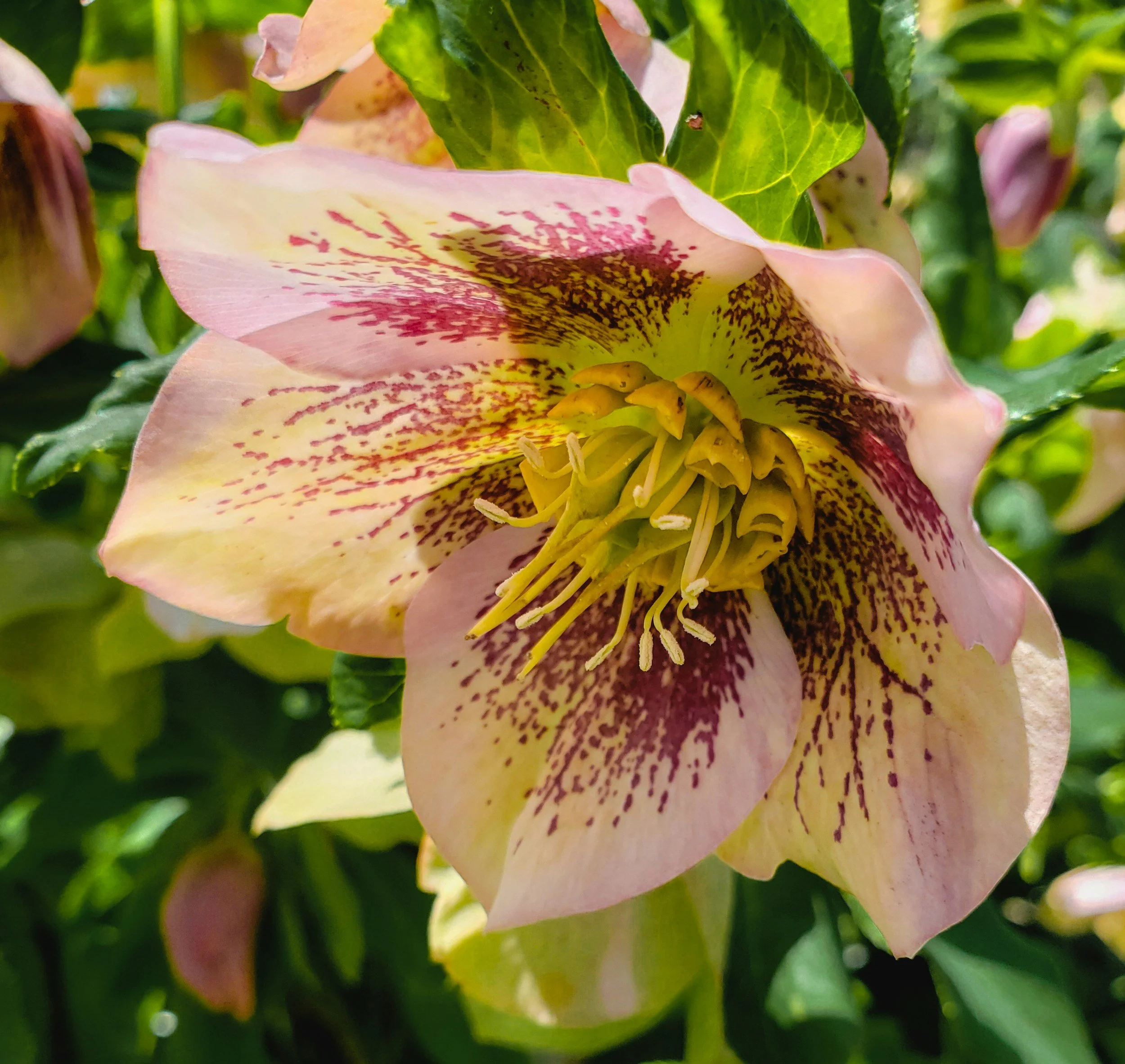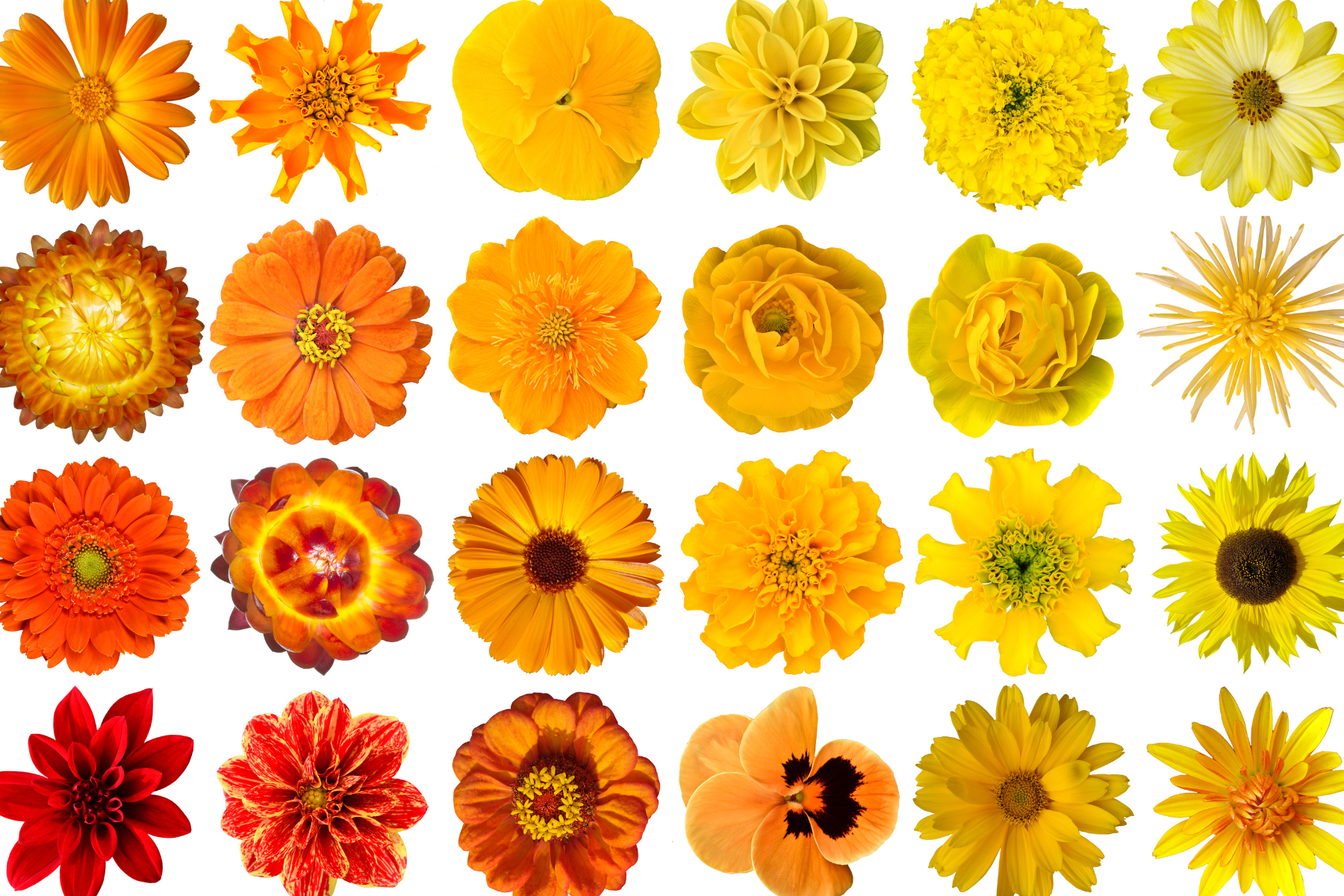
Flower Symbolism.
Flowers have spoken the language of the soul for centuries. Beyond their beauty, each bloom carries a unique story. Flowers hold symbols of love, healing, transformation, and resilience. From ancient myths to modern art, flowers remind us that nature holds wisdom woven into color, shape, and season. Exploring flower symbolism invites us to see beyond petals and stems, opening new ways to reflect, create, and connect with meaning in everyday life.
I, by no means, have ALL of the flowers listed here. But I will continue to add to my inventory as I research new blooms.
What intention are you going for?
Love & Romance | Healing & Protection | Spirituality & Mysticism | Strength & Resilience | New Beginnings & Growth | Mystery & Transformation
Love & Romance
Roses: Red, Pink, White, Orange, Yellow & Lavender
Symbolism:
Red Rose – Love, passion, desire
Pink Rose – Admiration, gratitude, sweetness
White Rose – Purity, new beginnings, remembrance
Orange Rose – Enthusiasm, fascination, energy
Yellow Rose – Friendship, joy, warmth
Lavender Rose – Enchantment, love at first sight
Healing Properties: Rose petals and rose hips are used in teas for their vitamin C, heart-healing, and anti-inflammatory properties.
Aromatherapy: Rose essential oil is known for its emotional support, helping with grief, heartache, and self-love.
Energetic Use: Opens the heart chakra, invites softness, connection, and emotional healing.
Healing & Protection
Echinacea (Coneflower)
Symbolism: Healing, strength, immunity
Healing Properties: Boosts the immune system, used to prevent and reduce cold/flu symptoms.
Tea/Tincture: Common in natural medicine.
Energetic Use: Strengthens personal boundaries and inner reserves.
Calendula (Marigold)
Symbolism: Protection, warmth, comfort
Healing Properties: Powerful anti-inflammatory; used in skin salves and teas for digestion.
Topical Use: Heals wounds, rashes, and promotes skin regeneration.
Energetic Use: Protective and comforting, bringing solar warmth to the body and spirit.
Cherry Blossom
Symbolism: Renewal, fleeting beauty, mindfulness
Healing Properties: Not traditionally medicinal; symbolic more than functional, but in skincare it’s used for its brightening effects.
Energetic Use: Invites mindfulness, appreciation of fleeting beauty, and gentle renewal.
Sunflower
Symbolism: Vitality, happiness, resilience
Healing Properties: Seeds are rich in nutrients (vitamin E, healthy fats). Oil used for skincare.
Energetic Use: Brings joy, uplifting energy, and solar power to low moods or low self-esteem.
Lavender
Symbolism: Calmness, peace, serenity
Healing Properties: Calming herb used in tea, essential oil, salves for stress, anxiety, and sleep.
Aromatherapy: Promotes peace, grounding, and nervous system regulation.
Energetic Use: Clears the aura, balances emotions, opens intuition.
Spirituality & Mysticism
Lotus
Symbolism: Enlightenment, purity, spiritual awakening
Healing Properties: Used in Eastern medicine; lotus leaf tea supports digestion and liver health.
Energetic Use: Spiritual elevation, detachment from drama, purity in murky emotional waters.
White Lily
Symbolism: Innocence, soul’s return, grace
Healing Properties: Sometimes used in homeopathy or oils for skin, but toxic if ingested.
Energetic Use: Softens grief, encourages spiritual receptivity and grace.
Iris
Symbolism: Wisdom, faith, divine messages
Healing Properties: Limited modern medicinal use, but historically linked with lymphatic drainage and cleansing.
Energetic Use: Aids intuition, dreamwork, and communication with the divine.
Caution: Some iris species are toxic if consumed.
Orchid
Symbolism: Mystery, beauty, refinement
Healing Properties: Symbolic; some orchids used in Traditional Chinese Medicine for respiratory issues or skin care.
Energetic Use: Supports refinement, mystery, and sensuality.
Black Dahlia
Symbolism: Transformation, mystery, strength
Healing Properties: Primarily symbolic — dahlias are not traditionally used medicinally.
Energetic Use: Deep inner transformation, shadow work, mystery.
Strength & Resilience
Cactus Flower
Symbolism: Survival, endurance, protection
Healing Properties: Prickly pear cactus (fruit/pads) used for blood sugar regulation, inflammation, hydration.
Energetic Use: Promotes boundaries, survival instincts, and sacred protection.
Tulip
Symbolism: Confidence, boldness, rebirth
Healing Properties: Not used medicinally (potentially toxic if ingested).
Energetic Use: Symbolic of rebirth, bold action, and rising from winter dormancy.
Chrysanthemum
Symbolism: Longevity, loyalty, tenacity
Healing Properties: Common in Chinese medicine—chrysanthemum tea supports eye health, reduces fever, and cools the body.
Energetic Use: Brings longevity, emotional stability, and clarity.
Protea
Symbolism: Courage, transformation, strength
Healing Properties: No known medicinal use—symbolic plant.
Energetic Use: Represents radical change, inner fire, and courage to evolve.
New Beginnings & Growth
Daffodil
Symbolism: Fresh starts, hope, renewal
Healing Properties: Traditionally symbolic; some daffodil extracts have been used in research for Alzheimer’s, but they are toxic if ingested.
Energetic Use: Awakens dormant energy, supports fresh starts and hopeful outlooks.
Fern
Symbolism: Growth, resilience, eternal youth
Healing Properties: Some species used in herbalism for lung or digestive support; others are toxic.
Energetic Use: Enhances resilience, protection, and personal evolution.
Bamboo
Symbolism: Strength, flexibility, prosperity
Healing Properties: Bamboo leaves and shoots used in Eastern herbalism for cooling, detoxifying, and diuretic effects.
Energetic Use: Flexibility, prosperity, growth through simplicity and alignment.
Magnolia
Symbolism: Perseverance, dignity, nobility
Healing Properties: Magnolia bark is used in Traditional Chinese Medicine for anxiety, sleep, and inflammation.
Energetic Use: Graceful strength, inner dignity, feminine wisdom.
Mystery & Transformation
Moonflower
Symbolism: Dreams, intuition, hidden wisdom
Healing Properties: Mostly symbolic; some species used in herbal traditions, but many are toxic and not safe for ingestion.
Energetic Use: Opens the dream world, enhances intuition, nighttime wisdom.
Nightshade
Symbolism: Mystery, dark beauty, secrets
Healing Properties: Includes plants like belladonna, which are highly toxic but historically used in magic and medicine with caution.
Energetic Use: Shadow integration, mystery, seduction, and protection.
Blue Rose
Symbolism: The impossible, unattainable dreams
Healing Properties: Symbolic only—true blue roses don’t exist in nature.
Energetic Use: Connects to the impossible, spiritual mystery, and unattainable desire.
Hellebore
Symbolism: Protection, secrecy, intrigue
Healing Properties: Used historically but toxic; not used in modern herbalism.
Energetic Use: Shadow work, psychic defense, deep transformation.
Resources
-
Hoffmann, David. Medical Herbalism: The Science and Practice of Herbal Medicine
→ A respected herbalist text with detailed information on echinacea, calendula, lavender, magnolia bark, chrysanthemum, and more.Tierra, Michael. Planetary Herbology
→ Blends Western and Traditional Chinese Medicine. Good for chrysanthemum, magnolia, bamboo, and lotus.National Center for Complementary and Integrative Health (NCCIH) – https://nccih.nih.gov
→ U.S. government site that provides safety and research-backed uses for herbs like echinacea and aloe.PubMed / NIH articles
→ Research databases that support uses like daffodil extract in Alzheimer’s research or aloe vera for skin inflammation.
-
Worwood, Valerie Ann. The Complete Book of Essential Oils and Aromatherapy
→ Covers rose, lavender, calendula (in carrier oils), and emotional/spiritual benefits.Tisserand, Robert & Young, Rodney. Essential Oil Safety
→ Clinical and safety-focused guide to essential oils like rose, lavender, and eucalyptus.
-
Cunningham, Scott. Magical Herbalism and Encyclopedia of Magical Herbs
→ Widely cited for plant magic, symbolism, and spiritual correspondences.
Beyerl, Paul. The Master Book of Herbalism
→ Offers both practical and esoteric views on flower and herb use.
Chevalier, Jean & Gheerbrant, Alain. The Penguin Dictionary of Symbols
→ Deeper cross-cultural symbolic interpretations (e.g. lotus, iris, nightshade).
Ballard, Robin Rose. The Secret Language of Flowers
→ Beautiful overview of flower meanings, often used in Victorian floriography and spiritual work.Flower Essence Society (FES) – https://www.fesflowers.com
→ For emotional and vibrational properties of flowers (like cherry blossom, sunflower, rose essence).
-
ASPCA Toxic and Non-Toxic Plants List – https://www.aspca.org/pet-care/animal-poison-control/toxic-and-non-toxic-plants
→ For flowers like tulips, daffodils, hellebore, nightshade, etc.Botanical Safety Handbook (AHPA)
→ Clinical-grade reference for toxicity and safe usage levels of herbs and flowers.

